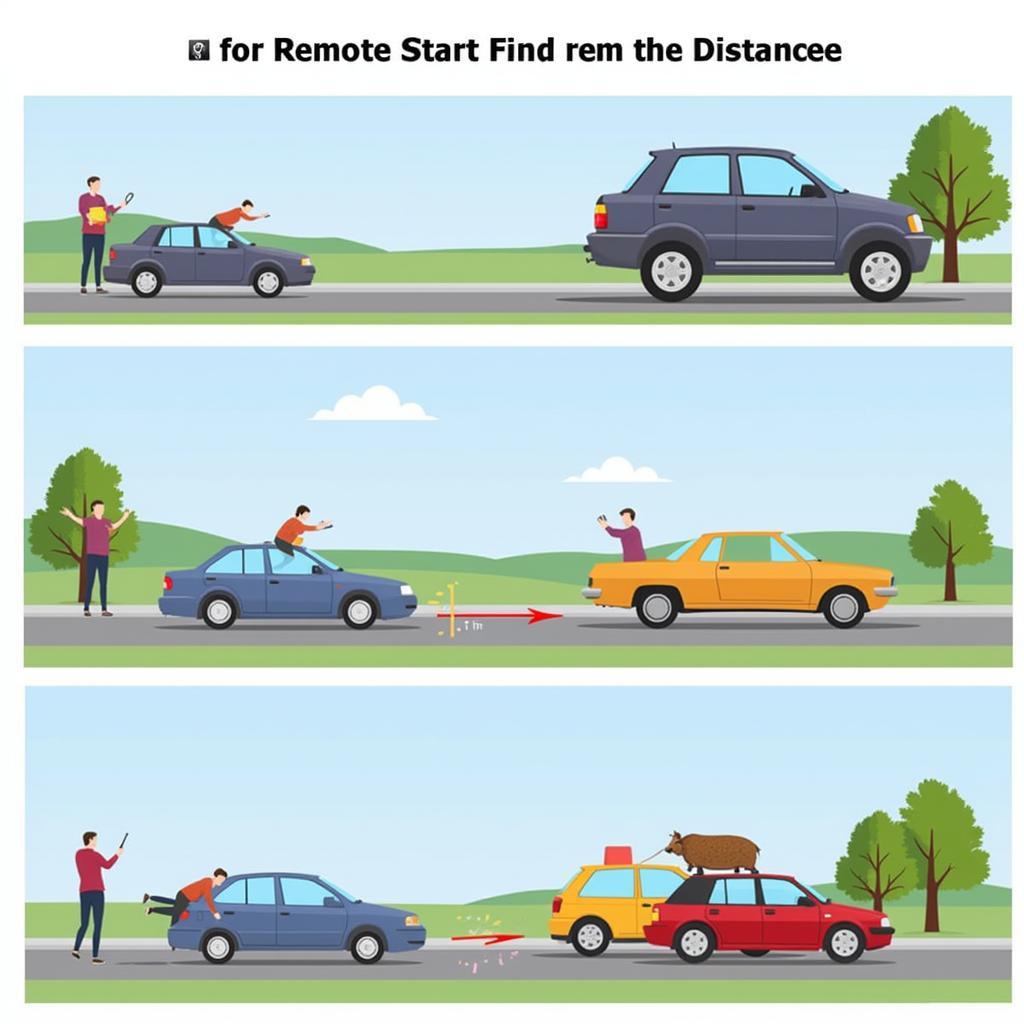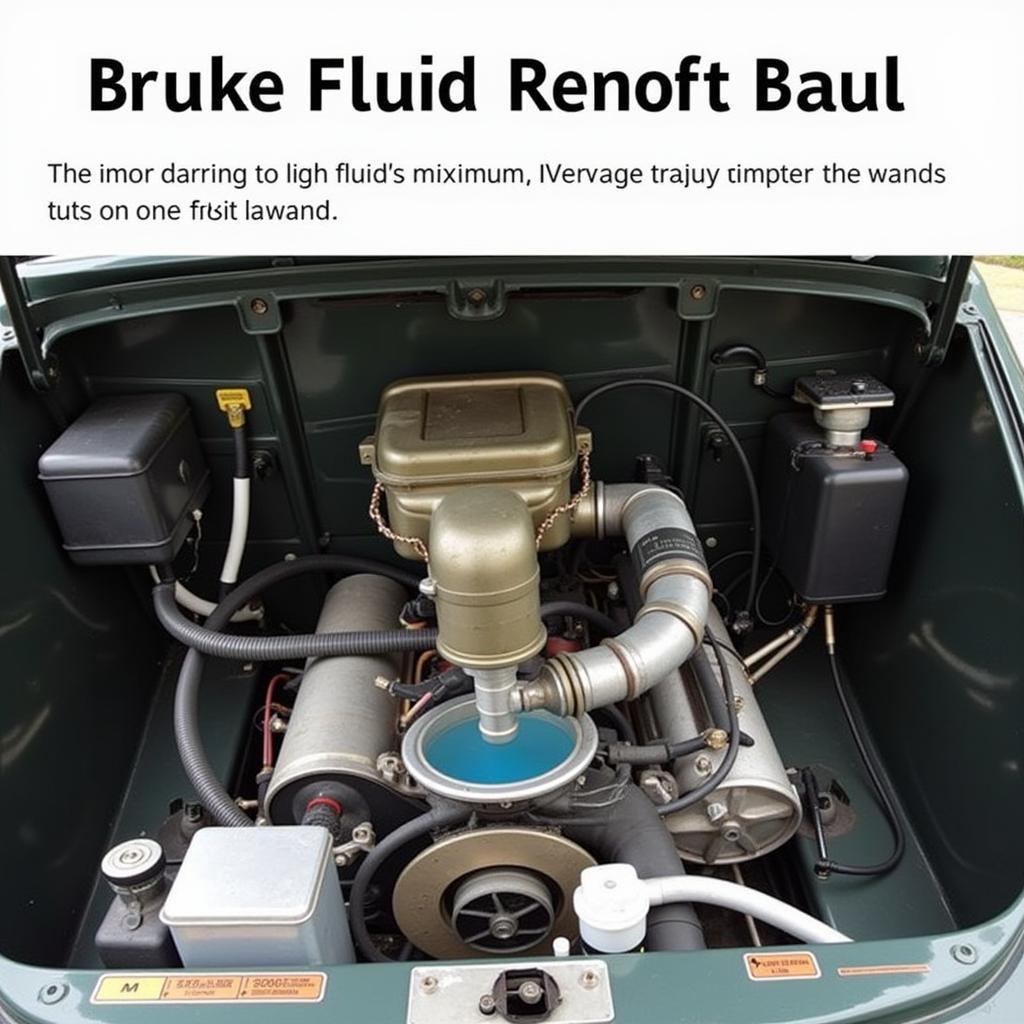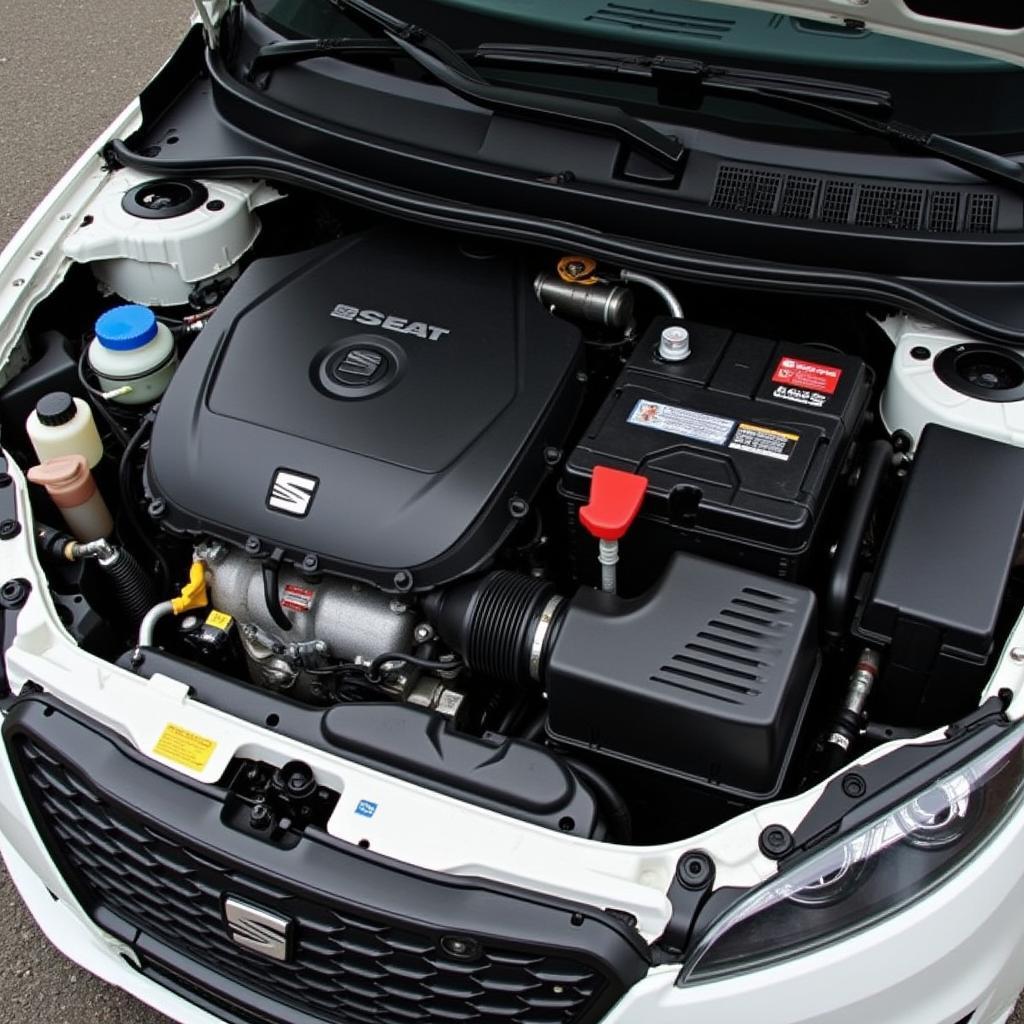Starting your car remotely with your key fob is a convenient feature, especially on cold winter mornings or scorching summer days. But how exactly do you start your car with the key fob from outside? This comprehensive guide will cover everything you need to know, from understanding the different types of remote start systems to troubleshooting common issues.
Remote starting can save you precious time and enhance your overall driving experience. With the click of a button, you can warm up or cool down your vehicle before you even step inside. This article will delve into the mechanics of remote start, offer practical tips, and address frequently asked questions. Having a remote start system installed can really make a difference to your morning commute and getting on the road quickly. It’s just like having one of those cool key fobs that everyone wants. If you’ve ever lost your keys and searched “find my key fob” online, you’ll know how valuable this technology is.
Many modern vehicles come equipped with factory-installed remote start systems. These systems are typically integrated with the vehicle’s security system and can be activated using the key fob. However, if your car doesn’t have a built-in remote start, you can always opt for an aftermarket remote start key fob. These systems offer a wide range of features and can be customized to your specific needs. You might be surprised at how easy it is to upgrade to an aftermarket system, and resources are readily available. For example, if you need to learn how to change a battery in a Kia key fob, there are helpful guides online.
Understanding Remote Start Systems
Remote start systems use radio waves to communicate between the key fob and the vehicle’s onboard computer. When you press the remote start button on your key fob, it sends a signal to the car, which then activates the ignition system, starter motor, and climate control. There are two main types of remote start systems:
- Key Fob Based Systems: These systems use the existing key fob to activate the remote start function. They are typically found in factory-installed systems.
- Standalone Systems: These systems use a separate remote control to activate the remote start. They are commonly found in aftermarket installations.
How to Use Your Key Fob to Remote Start Your Car
The process for remote starting your car varies depending on the make and model of your vehicle. However, the general steps are as follows:
- Press the lock button on your key fob.
- Press and hold the remote start button (usually designated by a circular arrow or a similar symbol). You may need to hold the button for a few seconds.
- The car’s engine should start, and the lights may flash to confirm that the remote start has been activated.
If your car isn’t starting, it could be due to a variety of factors. Perhaps the battery in your key fob is weak or the car’s battery is drained. For more information on troubleshooting a drained car battery, check out My Car Is Draining The Battery.
Troubleshooting Common Remote Start Issues
Sometimes, you might encounter issues with your remote start system. Here are some common problems and their solutions:
- Key Fob Battery: A weak key fob battery can prevent the remote start from working. Try replacing the battery in your key fob. For Kia owners, check out How to change a battery in a Kia key fob.
- Vehicle Battery: A dead or weak car battery will prevent the engine from starting. Have your battery tested and replaced if necessary.
- Distance: If you’re too far away from your vehicle, the key fob signal may not reach the car. Try moving closer to the car.
- Obstructions: Buildings or other large objects can interfere with the key fob signal. Try moving to a location with a clear line of sight to the car.
- System Malfunction: If none of these solutions work, there may be a malfunction with the remote start system itself. Consult a qualified automotive technician for diagnosis and repair.
 Testing the Range of Car Remote Start
Testing the Range of Car Remote Start
Having reliable key fobs is essential for convenient car access. If you’re looking for an upgrade, explore some cool key fobs for inspiration.
Advanced Remote Start Features
Some remote start systems offer additional features, such as:
- Run Time Extension: Allows you to extend the duration of the remote start period.
- Climate Control Preset: Automatically activates the climate control system to your preferred settings when the remote start is used.
- Security Integration: Works in conjunction with the vehicle’s security system to provide enhanced protection.
 Advanced Remote Start Features Displayed on Car Dashboard
Advanced Remote Start Features Displayed on Car Dashboard
Looking for a reliable aftermarket remote start system? Check out Aftermarket remote start key fob for options.
Conclusion
Starting your car with your key fob from outside provides convenience and comfort. By understanding how these systems work and how to troubleshoot common issues, you can fully utilize this helpful feature. If you’re experiencing persistent problems, remember to consult a qualified automotive technician. With a properly functioning remote start, you can enjoy a more comfortable and enjoyable driving experience. And for more information on interesting key fobs, check out Cool Key Fobs.
FAQ
- Can I remote start my car with a dead key fob battery? No, a functioning key fob battery is required to send the signal to the car.
- How long does the remote start usually last? The typical run time is between 10-15 minutes, but it can vary depending on the system.
- Is it bad to remote start your car frequently? Frequent remote starts shouldn’t harm your car, but it’s always best to consult your owner’s manual.
- Can I install an aftermarket remote start system myself? While possible, professional installation is recommended for optimal performance and safety.
- What is the average range of a key fob remote start? The range varies but is typically between 50-100 feet.
- Does remote start affect car security? Most systems enhance security, but it’s essential to choose a reputable system.
- Can I remote start my car while it’s moving? No, remote start systems are designed to work only when the car is parked and stationary.



